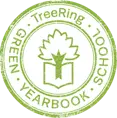Curriculum Guide
Practical Life Outcomes
Development of independent life skills for daily care and management of self; the environment (classroom, home, outdoors); and the daily school demands.
Motor Development / P.E. Outcomes
Development of large/gross motor and fine motor skills leading to: manual dexterity; pincer grip (for handwriting): graceful & controlled movements such as walking; physical coordination; understanding of P.E. games, rules, sportsmanship; and an appreciation for physical fitness activity.
Social & Emotional Outcomes
Development of an adaptive and responsible student who has a healthy well-being and self-awareness including appropriate sense of self-control, self-regulation, flexibility, responsible decision-making, and necessary relationship skills to interact with peers, teachers, family, and others.
Peace, Tolerance, and Inclusion Outcomes
Development of a "global citizen" who has a sense of inner peace; a positive purpose in the community; the ability to demonstrate kindness, compassion, respect, tolerance, and inclusivity for others; a sense of conflict resolution and social justice; and the understanding that individuals can and need to make a difference in the world.
Language Arts Outcomes
Development of the critical thinking necessary to express ideas clearly, collaborate, ask questions and give solutions, and make connections with others in English through reading, writing, speaking, and listening; appreciates reading for both knowledge and pleasure; utilize appropriate conventions in writing, speaking, and reading, as well as understanding spelling; develop skill in public speaking before peers, teachers, and other adults; and build creative expression and endurance for story telling and informative writing from draft through final copy.
Sensorial / Geometry Outcomes
Development of curiosity and excitement for learning; development of critical thinking and problem-solving skills in concentration, order, organization, observation, identification, comparison-making, reasoning, etc.
Mathematics Outcomes
Development of creative problem-solving skills to solve classroom and in real life problems through the ability to: use the four math operations (+, -, x, /) for whole number, fractions, and decimals; use/read/interpret patterns, data, graphs, ratios, and proportions; understand and use money; and apply measurement skills in time, distance, weight, volume, and temperature.
History & Geography Outcomes
Development of curiosity, awareness, appreciation, recognition, and respect/conservation of the natural and social world; develop creative problem-solving skills through observation, research, study methods; and apply knowledge to present and share information with others. Includes exposure to concepts in history; earth science; physical, political, social geography; and world/local cultures and customs.
Science Outcomes
Development of curiosity, awareness, appreciation, recognition, and respect/conservation of the natural world; develop creative problem-solving skills through observation, research, scientific study (investigation and experimentation) methods; apply knowledge to present and shares information with others. Includes exposure to concepts in botany, zoology, chemistry, and physics.
Stewardship Outcomes
Development of a sense of responsibility for community and environment (the world) through understanding, responsibility, a sense of duty, and selfless actions.
Foreign Language Outcomes
Development of appreciation, curiosity, and respect for other cultures through study of language, customs, and holidays.
Art Outcomes
Develop appreciation for fine art; understand the importance of and uses of artistic expression to humans; exposure to variety of art mediums and materials; and build confidence to participate in artistic expression.
Music Outcomes
Develop appreciation for music and drama; understand the importance of music to humans; and build confidence to participate and perform.

